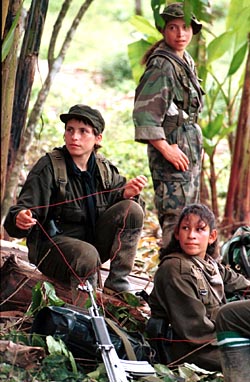By Brianne Yantz
Impunity Watch Reporter, North America
TEGUCIGALPA, Honduras – Earlier this month the Organization of American States voted to readmit Honduras after President Porfirio Lobo agreed to former President Manuel Zelaya’s return from exile. Honduras was suspended from the OAS in 2009 after Zelaya was ousted by the Honduran military in a coup d’état.

- Zelaya’s supporters gather in Tegucigalpa to listen to his speech 3 months after ouster. (Photo Courtesy of the NY Post).
At the time of his removal Zelaya had been campaigning for constitutional reform, which his opponents alleged were in efforts to extend his presidency. The Honduran constitution bans leaders from serving more than one term in office and the speculation that Zelaya desired to run for a second term served as the pre-text for his removal.
Despite the reasons behind Zelaya’s removal, many believe the nation is worse off than it was two years ago. According to the Inter-American Commission on Human Rights, more than 4,000 cases of human rights violations were documented between June 2009 and December 2010. Human rights activists, journalists, and the government’s political adversaries have been among those suffering violent abuse and repression at the hands of the Honduran military and police.
Honduras is currently one of the world’s most violent nations. The homicide rate is four times higher than that of Mexico, with 67 per 100,000 people murdered each year. In the past year alone around 40 community leaders, many of which were Zelaya supporters, were killed.
Since his election to office last year, President Lobo has made multiple public statements calling for and promoting peaceful resolution but the violence has continued. Although some see Zelaya’s return to Honduras as a step towards achieving peace, many believe the on-going human rights violations that have endured for the past two years are far from over.
These beliefs are not without merit. The Cartagena Accord, the diplomatic agreement that paved the way for Zelaya’s return, mandated that the assassins, torturers and rapists of the Honduran regimes of the past two years be immune from criminal prosecution. According to a Workers Word report, Committee of Relatives of the Detained-Disappeared in Honduras representative Bertha Oliva criticized the agreement, stating, “We do not see any indications of how and when those responsible for the crimes against humanity committed during and after the coup will be punished.”
Oliva is one of many who are skeptical of conditions of Zelaya’s return and if his presence will help rid Honduras of despair. Many believe the that Zelaya was allowed to return so that Honduras would be readmitted to the OAS, an action more than 20 human rights organizations had opposed because it effectively legitimized the government that rose to power after the coup.
Zelaya’s return is a return to political normalization; however, there is still no guarantee that his return and the return of Honduras to the OAS will restore civil rights and freedoms to the people of Honduras.
For more information, please see:
Workers Word – Zelaya returns to Honduras – June 9, 2011
LA Times – Fixing Honduras – June 7, 2011
Reporters Without Borders – Concern about future of civil liberties, human rights after OAS readmits Honduras – June 7, 2011
The Miami Herald – Hollow victory – June 5, 2011
Latin American Press – End of the crisis? – June 2, 2011
BBC News – OAS lifts Honduras suspension after Zelaya agreement – June 1, 2011



